“World Memory, Peaceful Vision - Exhibition on the Historical Facts of the Nanjing Massacre” Opens in Budapest, Hungary
At 4 pm on October 30 local time, “World Memory, Peaceful Vision - Exhibition on the Historical Facts of the Nanjing Massacre” opened at the Museum of Ethnography in Budapest, a historic city that straddles the banks of the Danube River. Budapest is the second stop on a European tour of the exhibition, following the one in Madrid, Spain. Nearly 100 people attended the opening ceremony. Among them were Peter Medgyessy, former prime minister of Hungary; Sándor Sveiczer, mayor of Heves in Hungary; Ákos Gerhard, mayor of Velence in Hungary; Sun Jie, minister counselor for cultural affairs of the Chinese Embassy in Hungary; Zhou Feng, director of the Memorial Hall; and representatives from all walks of life in Hungary and China.
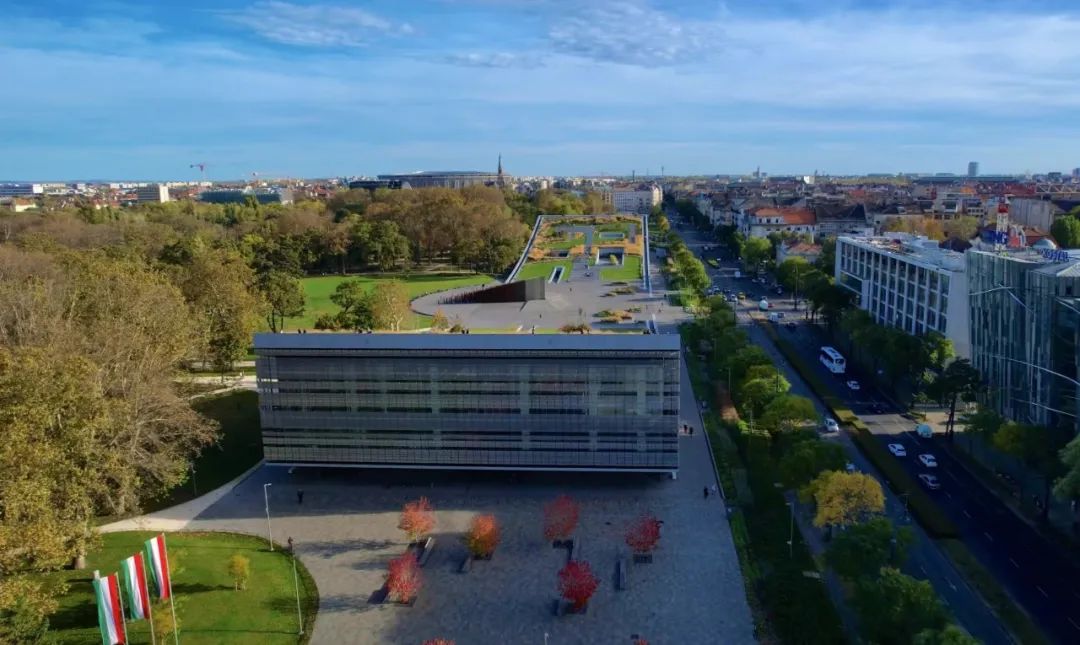
An exterior photo of the Museum of Ethnography in Budapest

Opening ceremony of the exhibition
In spring 1938, renowned Hungarian-American war photographer Robert Capa came to China and recorded some moments during the Chinese People’s War of Resistance against Japanese Aggression and people’s wartime life. American magazine Life published many photos taken by Robert, which drew global attention to the battlefield in China. Three months before his arrival in China, the Japanese army brutally slaughtered numerous Chinese civilians and soldiers, in what came to be known as the Nanjing Massacre.

Robert Capa (1913-1954), original name Endre Ernő Friedmann, a Hungarian-American photographer and one of the most famous war photographers of the 20th century

On May 10, 1938, American magazine Life featured a cover showcasing a young Chinese soldier captured by Robert in Hankou, China in late March 1938
Centered on peace, the exhibition consists of three parts: “The Calamity in Nanjing”, “Justice Trial”, and “The City of Peace”. It features more than 100 historical pictures, and nine exhibits. By focusing on the destiny of individual survivors, the exhibition gives audiences a microscopic view into history. It also seeks to relate that history in a rational and objective manner, quoting Western media reports and diaries and letters kept by some Westerns from a third-party perspective. Among them, photos taken by Robert about China’s fight against Japanese invasion and the story about a Hungarian doctor who helped treat Chinese people during the war strike a chord with the Hungarian people. While developing a better understanding of the history of the Nanjing Massacre, the Hungarian people can also learn about what Nanjing as an International City of Peace has done to promote peaceful development in recent years and hear the “voice of peace” from China.
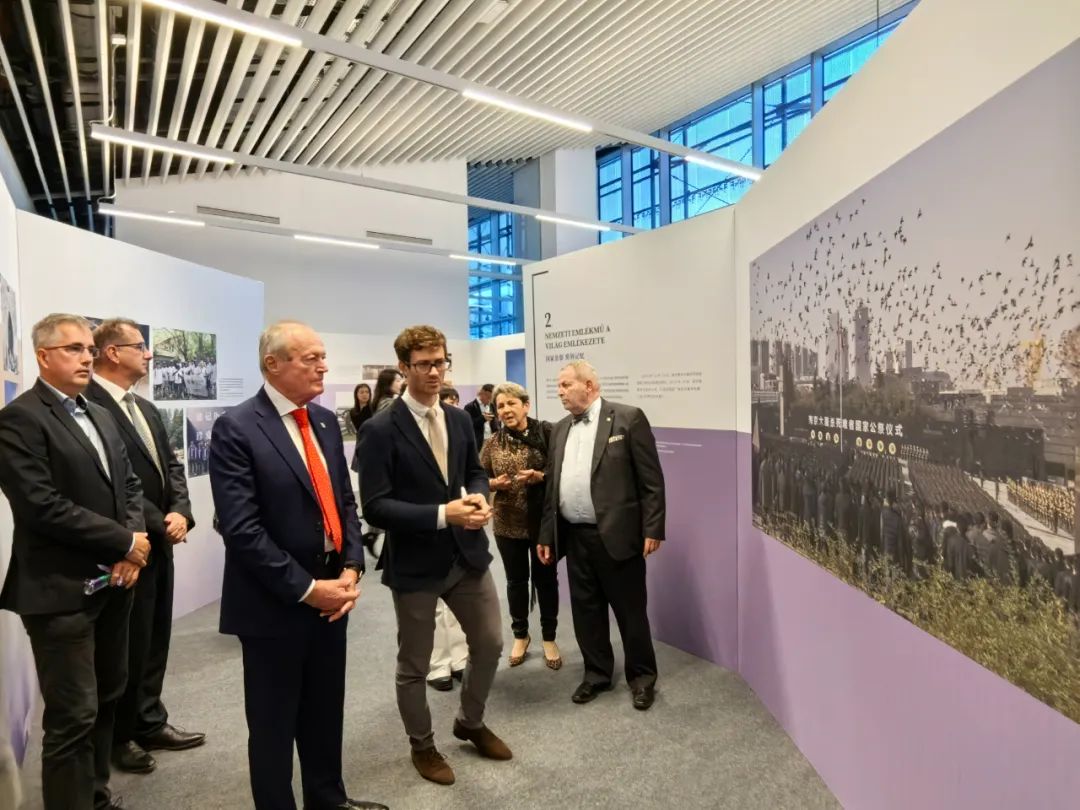
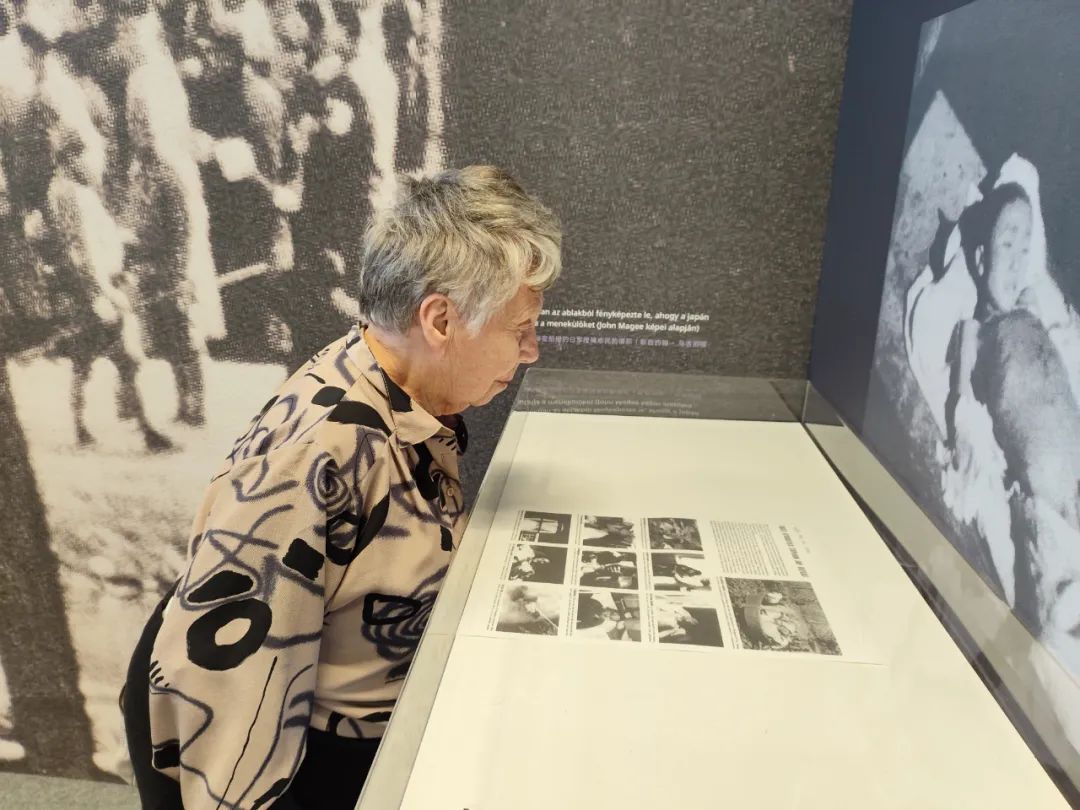
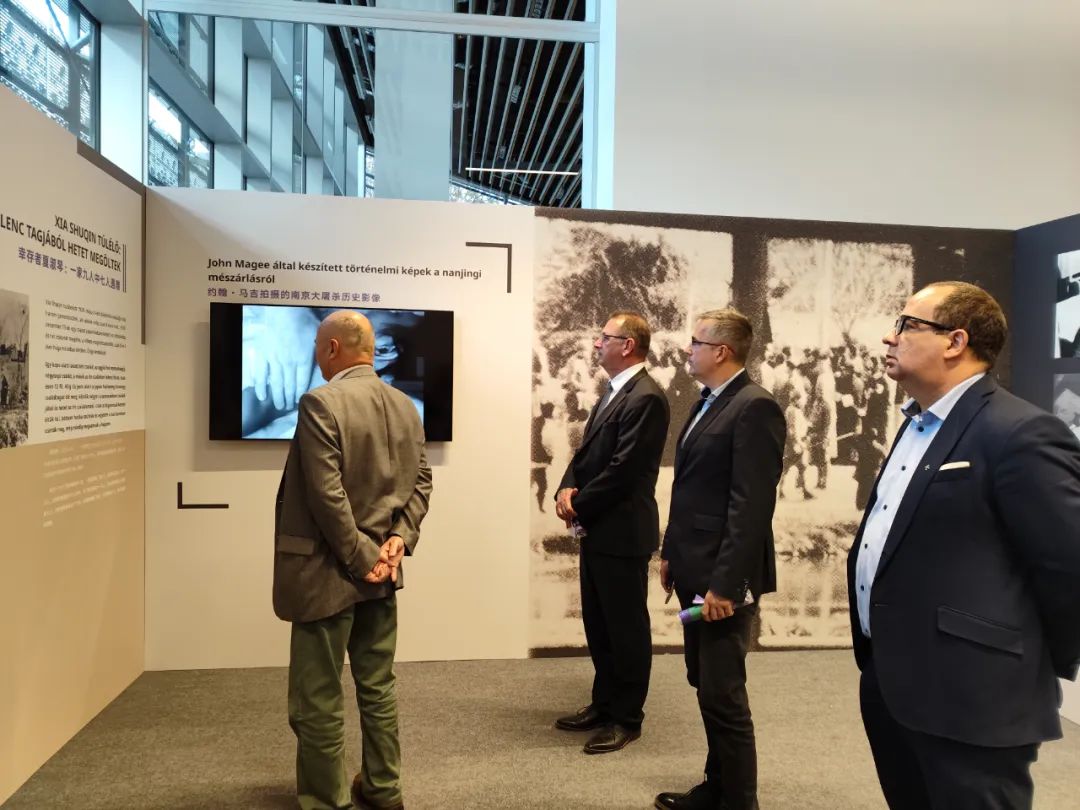
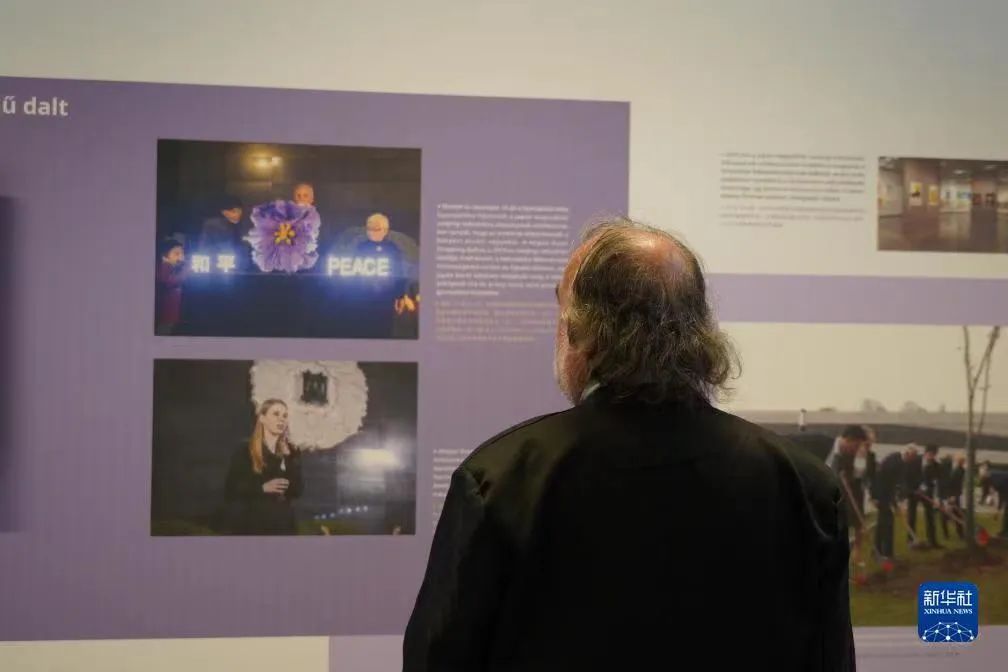
Guests visit the exhibition
“I visited the Memorial Hall five years ago. At that time, my heart was full of sadness. I couldn’t understand how the Japanese army could have committed such outrageous atrocities beyond the bottom line of human conscience. It is still hard to imagine they did that even if I’ve read a lot of historical works. This exhibition truthfully unveils that brutal history. It offers us a chance to feel the sadness from war again. Besides, it allows young people to better understand the value of peace. Humans can only survive in peace,” said Peter Medgyessy, former prime minister of Hungary.
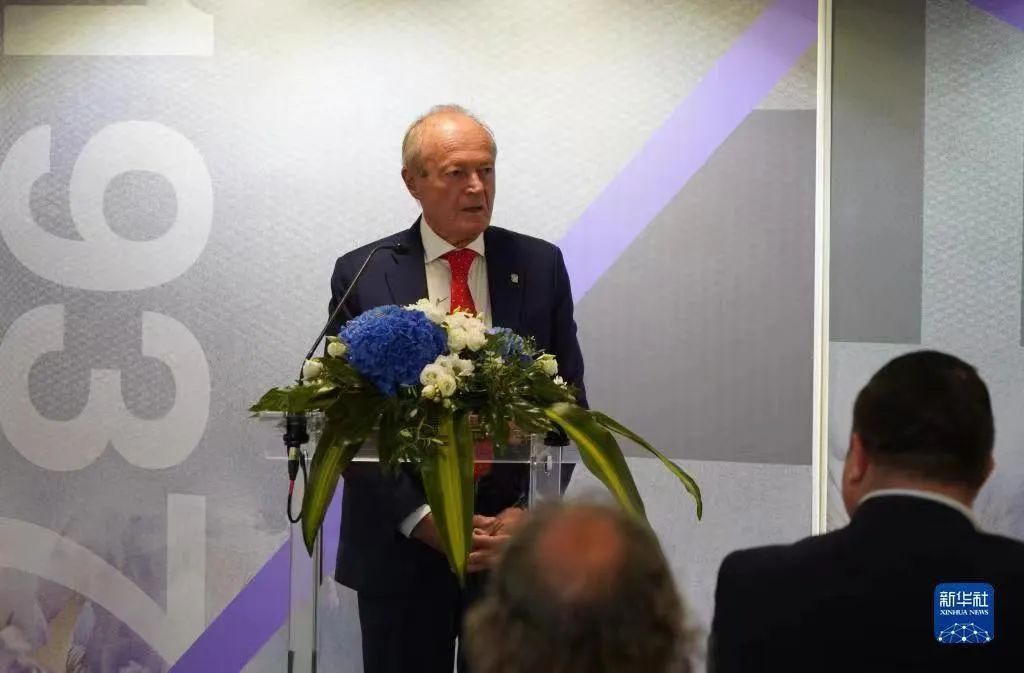
Peter Medgyessy, former prime minister of Hungary
Ákos Gerhard, mayor of Velence in Hungary, once studied in China and speaks fluent Chinese. “I can’t believe such a cruel tragedy happened on the Eastern battlefield during World War II. I visited Nanjing just recently and like it very much. We should learn and draw lessons from history so that war won’t break out again. Only peace can bring humans a better future,” he said.
Marianna, a member of the Hungarian-Chinese Friendship Association, visited the exhibition. “It’s very meaningful. We shall never forget the painful past, and shall always long for peace. This is very important for future generations. I’ll encourage my grandsons to visit the exhibition. It’ll be a good history lesson.”
After his visit, Dr. Chen Zhen, president of the Central and Eastern European TCM Association and head of the Qihuang Traditional Chinese Medicine Center of Hungary expressed his feelings. “As a native of Jiangsu, I have mixed feelings visiting an exhibition regarding the Nanjing Massacre in Budapest. My heart aches. This history must be remembered, and should be known to more European people. I will print the text in Hungarian as given in the exhibition and give them to my Hungarian employees and friends. I hope they would visit the exhibition with their family and children during the Halloween holiday. Here, they can learn about the history of the Nanjing Massacre and also sense the importance of peaceful development.”
In his speech, Zhou Feng, director of the Memorial Hall, said there are many possibilities for communication between Budapest and Nanjing, as they both have a colorful history and culture. Budapest is known as the Pearl of the Danube; Nanjing was one of China’s important ancient capitals and is now an International City of Peace facing the future. “Through the exhibition, we mourn for those who died during the Nanjing Massacre, commemorate those who bravely stood up to the atrocities, and salute the righteous deeds of those who provided humanitarian assistance during the massacre. More importantly, we want people to learn from history and jointly work toward a bright future of peaceful development.”
On October 9, 2015, the Nanjing Massacre became a world memory as UNESCO added Documents of the Nanjing Massacre to its Memory of the World Register. So far, the Memorial Hall has held exhibitions in a number of cities, including Los Angeles in the United States; Moscow in Russia; Florence in Italy; Manila in the Philippines; Caen in France; Minsk in Belarus; Prague in the Czech Republic; Aarhus in Denmark; and Madrid in Spain. The exhibition will help the Hungarian people learn more about the history of the Nanjing Massacre,and offer them a way to understand the Chinese people’s aspirations to remember history, cherish peace, and create a better future.

